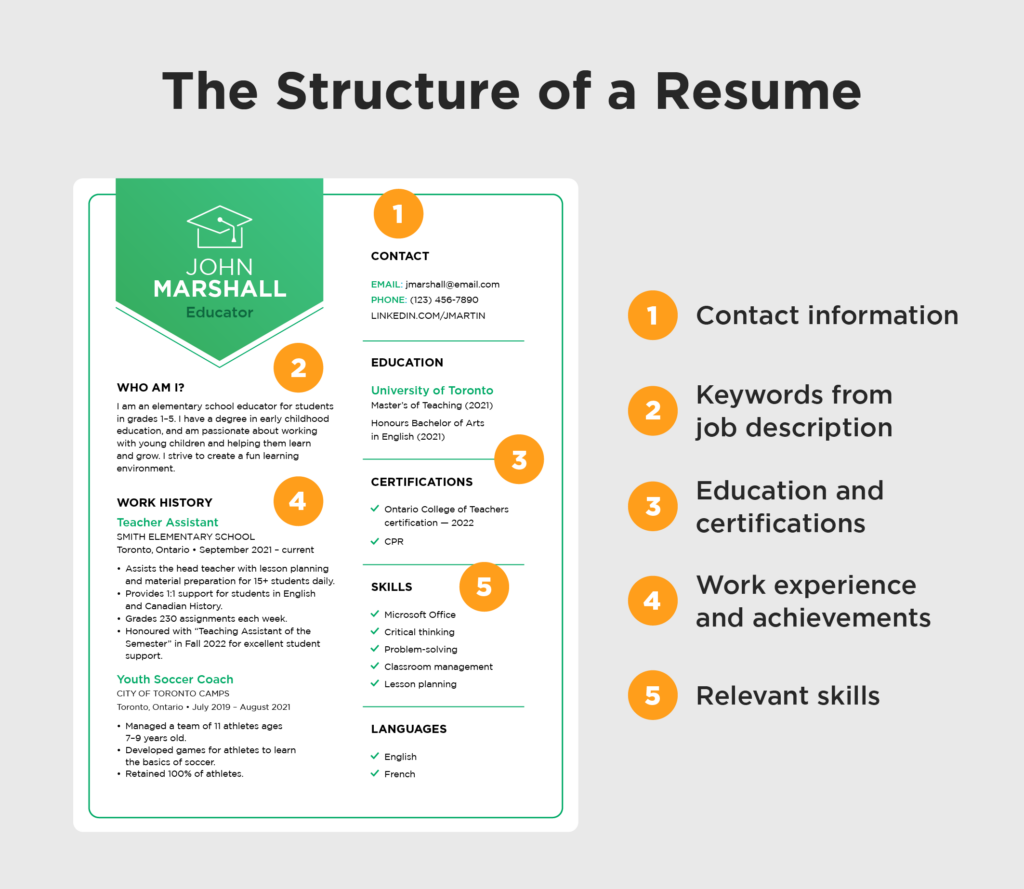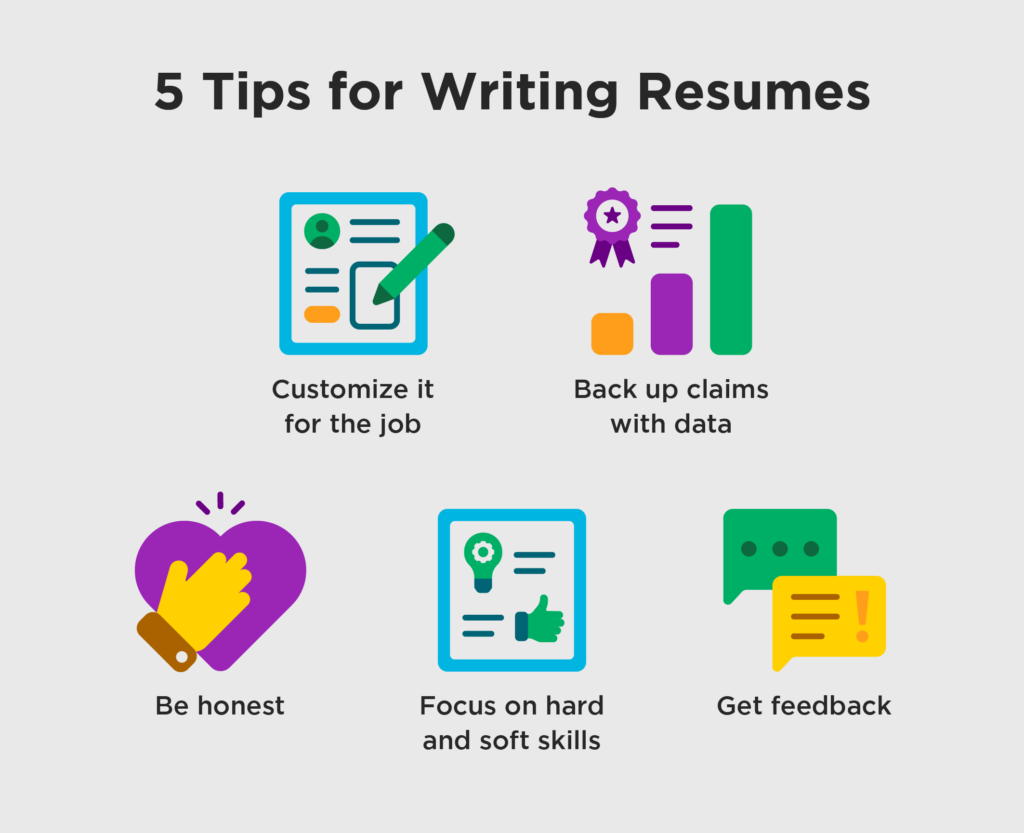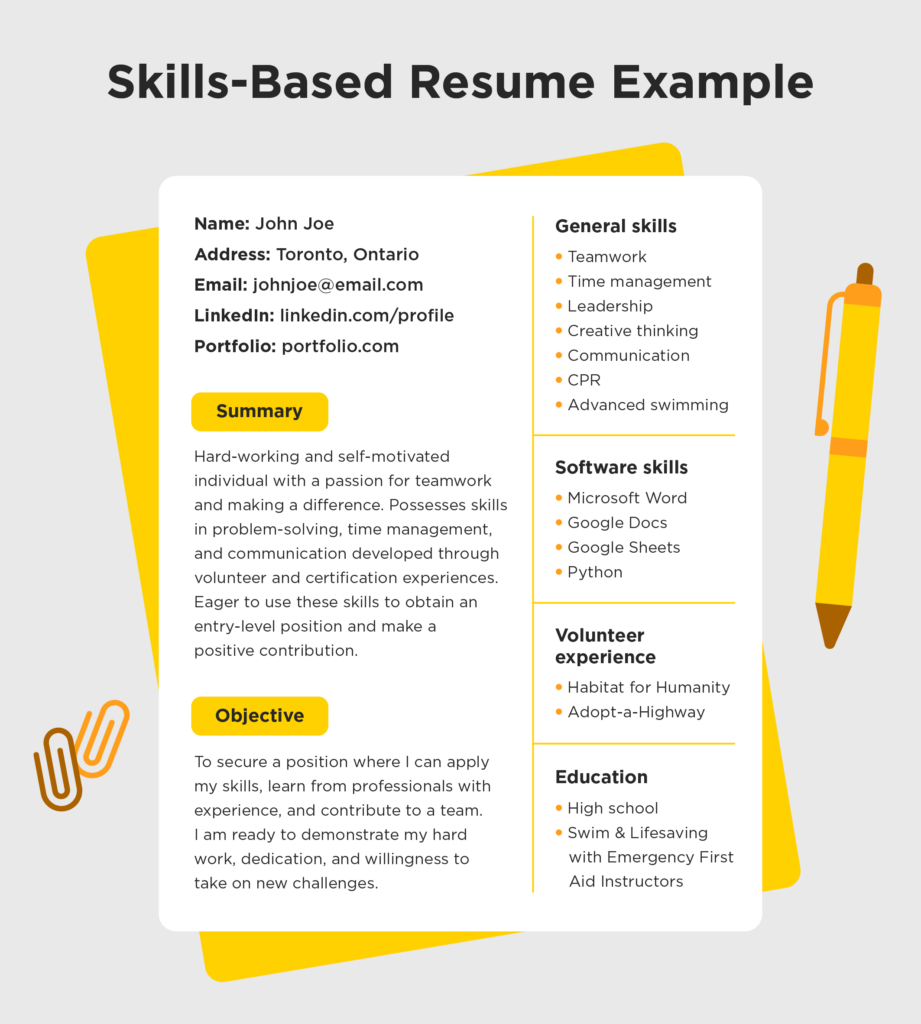How To Make a Resume in 2024 [Examples]

quick answer
Resume writing may seem daunting, but it doesn’t have to be. See how to make a resume in 8 easy steps by choosing the proper format, using keywords, and more.
In This Article
Knowing how to make a resume consists of 8 easy steps:
They say first impressions are everything. So, resume writing skills are important.
Your resume (also known as a curriculum vitae or CV) is the first impression you make with a potential employer. Understanding that a resume is important and wanting to create one properly is the first step to success.
Knowing how to make a resume that positions you as the ideal candidate is an important first step before you’re even ready to apply for jobs and impress hiring managers. The good news is that anybody can create a polished resume when they know how.
Current students and alumnus of Robertson should contact our Workforce team for resume writing support.
By the end of this article, you will know how to make a resume — you’ll even learn how to make different types for different purposes. Let’s get started!
Your research will be the basic ingredients for your resume. Get a few things prepared before you start to cook later. Look at your LinkedIn profile or old pay stubs, and write down work information like:
“Jot down bullet points that list the job experiences you’d like to highlight…This will act as a skeleton for the resume you will eventually create,” says Rashad Welch, Workforce Team Member.
It’s important to have this information readily available to create a custom resume for each job. Employers don’t want to see a generic resume — they want one that shows you are the perfect candidate for their specific role. Preparation will help you build many types of resumes with ease.
Want to take it to the next level? Research the job opportunity itself. Visit the employer’s website, their LinkedIn, and the job posting. Write down things like:
This information will help you build a resume (and cover letter) tailored to impress.
Your resume format helps tell the story of your skills and work experience. Depending on your work history, there are a few options for approaching this. The main types of resume formats include:
Use a free resume template to create a professional-looking CV that is easy to read. Whether a human reads your resume or an applicant tracking system (ATS), you must present your information clearly and concisely.
Hiring is a lot of work, so whoever reads your resume is probably very busy. Hiring Managers often look at each resume for less than 30 seconds during their first read-through.
With less than a minute to impress, you don’t want to waste a second. Organize your resume so that the most important information, such as required qualifications, is summarized at the top of the page.
Important information to include in the header of your resume includes:
Your summary can also include your areas of expertise, career accomplishments, and how your skills can benefit the prospective employer. Next, we’ll show you how to highlight relevant skills.
Rather than including long, detailed descriptions of your duties, skills get right to the point. They are bite-sized pieces of information that highlight your strengths and abilities. Sometimes, they’re job-specific, but many skills are transferable. An easy way to think about this is soft vs. hard skills.
Soft skills are personality traits that you can apply to any job or situation. Advanced roles may require job-specific skills, but soft skills are always important. For people without a lot of experience, a list of soft skills will make your resume shine.
Examples of soft skills include:
Hard skills are technical abilities you learn on the job or through training. These are the skills you learn, not the skills you are born with. Always include hard skills that are relevant to the job you are applying for, especially when they’re listed in the job description.
Examples of hard skills include:
For a place to start, look at your previous work research. Next, think about each job and write down all the skills you can think of. This list of skills will become a useful reference for resumes, cover letters, and more.
Career Tip: While you may already have many of these skills, you may need to upskill or reskill in order to land the job you want. If your hard or soft skills need a reboot, Robertson’s Micro-Courses are designed for exactly this purpose –– from hard skills like C# Programming to soft skills like Active Listening and Conflict Negotiation.

One of the most powerful ways to make your resume stand out is to insert keywords from the job description into your application. Using keywords will help your resume move forward, whether a human or an ATS system reviews it.
Imagine a company looking for a “team player” who can “juggle multiple tasks.” You should use these keywords in your resume, even if you’ve used similar ones. For example:
Using a hiring manager’s keywords will increase your chances of getting your resume seen. ATS systems can’t read like humans, so they use keywords to discover and highlight the best resumes. Including relevant keywords will impress the ATS system and help get your resume seen by recruiters.
Your work experience describes your employment history, including full-time and part-time positions. Achievements and volunteer experience are similar but should appear in separate sections. Only include information directly related to the job you’re applying for, and avoid irrelevant details.
For example, it might not be useful to mention your high school dog grooming job when applying for a job as a Pharmacy Technician. These details are outdated and irrelevant. Your resume must show your readiness for the position you’re currently applying for.
Find opportunities to mention specific, measurable outcomes from previous roles.
For example, if 80% of client interactions got converted into sales at your previous job, include this information in your resume. Concrete, measurable targets help Recruiters, Headhunters, or prospective employers understand how you can truly impact their business.
While many job hunters place their education at the top of their resumes, this isn’t necessarily the best approach. Your main goal should be to highlight the most relevant content to the prospective employer.
If the employer has asked for specific education or training, they will look for this information under the corresponding header. Your unique work experiences and skills are what make your resume stand out.
Your resume tells a story, so keep things structured to achieve this. The top of your resume will include contact information, followed by your detailed work experience and then your education. Including your education and certifications at the end demonstrates that you possess the appropriate training and credentials to perform the job.
When our Career Services Team coaches students on how to make their resumes stand out, they always mention that simplicity is key. You don’t need to use fancy fonts or colourful templates. The best resumes use easy-to-read layouts organized by bullet points and headers.
The easier the information contained within your headings is to find, the more likely you’ll be selected for an interview. You can review it yourself, but sometimes it helps to get a second set of eyes. Ask somebody in your network to read your resume and provide some feedback.
Proofread your drafted resume and make a note of any final touches it needs. Don’t focus on making your resume perfect; focus on achieving your objective –– to make a resume that’s clear, comprehensive, and tailored to the job you want.
During or after this phase, you can prepare to submit your resume. Take one last look, and consider the following best practices:

There’s no perfect resume, so keep it simple and focus on being clear. The main goal is to present yourself well enough to secure the job you’re applying for. Remember these five key tips when creating your resume:
You don’t need work experience to make a resume. Resumes can discuss job-related information like general skills, objectives, and education. Don’t mention hobbies like playing video games. Do mention personal projects, like building a custom live-stream setup. You should only share information that reflects your professional mindset. The more data you have to back up your claims, the better.
Employers will recognize your hard work, and it can pay off eventually. Eventually, you will gain work experience that you can add to your resume. Always remember to be honest, professional, and be your best self.
Here’s how to build a resume without work experience:
Pro Tip: Before you start writing, you can do a little bit of research and self-reflection. In the process, write down information about yourself, including:

We all have unique skills and work experience, which means there is no one best resume format. The best resume format for you will highlight your skills and experiences effectively, landing you a dream job.
At Robertson College, we know every career path is unique. That’s why we offer a range of Diploma and Certificate programs, so you can study in the way that works for you. Plus, our Workforce Team is here to guide you through your job search, from resume writing to preparing for your interview.
Want to improve your education, skills, and job experience? Upgrade your career potential with a Robertson College Diploma.
In This Article
Once you take the first step, one of our Student Admissions Advisors will get in touch to better understand your goals for the future.
Apply Now